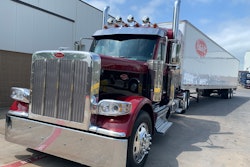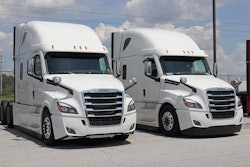Working for a multi-national truck manufacturer taught me that the same words may not mean the same things. Something as simple as describing a truck can lead to significant misunderstanding.
For example, a “typical” truck in the U.S. might be described as a 6x4 conventional sleeper tractor pulling a 53’ two axle trailer — colloquially termed an 18-wheeler. Those same 18 wheels in Europe are most likely a 4x2 cab-over pulling a 44.8’ three-axle trailer. Go to Australia and you’ll need to add some wheels. There, a typical tractor is a 6x4 pulling at least a 3-axle soft-sided trailer, and likely a B-train double. The “typical” truck may have a wide range of definitions if operating north of the border in Canada or states like Washington where heavier loads are common.
Very often, these significant differences are lost in discussion of regulations, analyses, media and especially blogs. Sometimes different fruits can be compared; for example, asking someone if they would prefer an apple or an orange. At other times, projecting data from oranges onto apples can be misleading.
I was fortunate to work once with a small multi-national team representing North America, Europe and Japan, helping to identify where regulations on truck aerodynamics and fuel economy might be harmonized. The very first task was to clarify differences in vehicle type by region.
Truck and trailer specifications were fairly straightforward to compare, but the foundation of what those vehicles looked like was why they were regionally different. Understanding the reasons for vehicle configurations in each market required looking at the geography and freight networks of the differing regions. Additionally, the market buying mentality differed.
It’s often too easy to cherry pick a factoid and use it to justify an argument. For example, data on trucking in England can be quite useful, but a caution is needed as, contextually, the nation is the size of the state of Alabama. Various sources show that the U.S. is approximately 40 times larger that England, Scotland, Wales and Northern Ireland combined. The three longest roads, according to the Royal Automotive Club, are all less than 400 miles. I recently drove from San Antonio to El Paso on Interstate 10, a trip of 550 miles – only a portion of I-10’s 2,460-mile overall length.
Geographic scale is often challenging when comparing Europe to North America. Germany reportedly has about 21,000 miles of railroad, of which, some 12,670 are electrified. The U.S. has perhaps the largest rail network in the world at 160,000 miles, with very limited electrification. Canada has roughly 31,000 miles of track, of which approximately 80 miles is electrified. I often get asked why the U.S. and Canada are not more vested in electrifying rail transport because it seems Europe is doing it. I suspect there might be a need for a few 100-page reports on a variety of explanations, but at least one of them has to do with scale. North America — Canada, the U.S. and Mexico — is, for lack of a better description, big.










